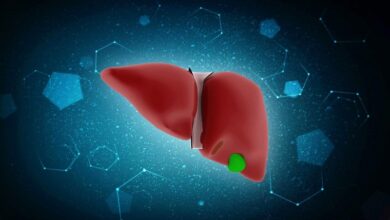Can high blood pressure cause severe vision loss?
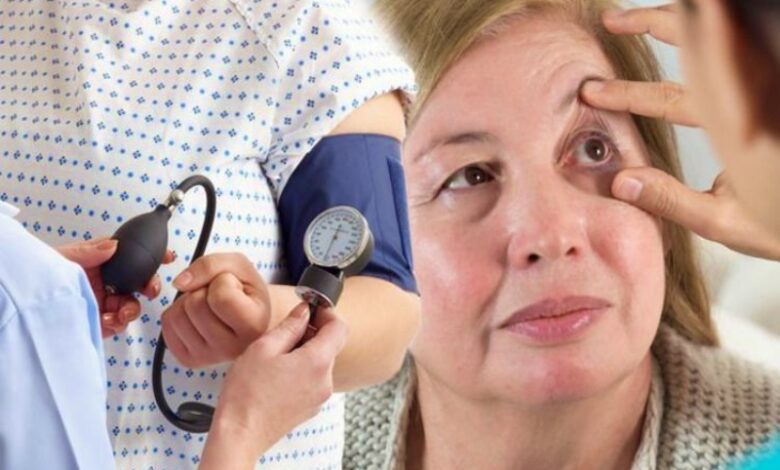
1
When suffering from high blood pressure, people with this chronic disease, especially when it is high, may be exposed to many vascular problems, heart attacks, and deterioration of the condition of small blood vessels, which then has a significant negative impact on vision rates, resulting in retinal weakness. It may even lead to blindness in the worst circumstances. In more detail, today we will talk about the problem of high blood pressure, vision problems, and poor eyesight, and how can a patient with chronic hypertension contain this matter as much as possible?
High blood pressure and retinopathy
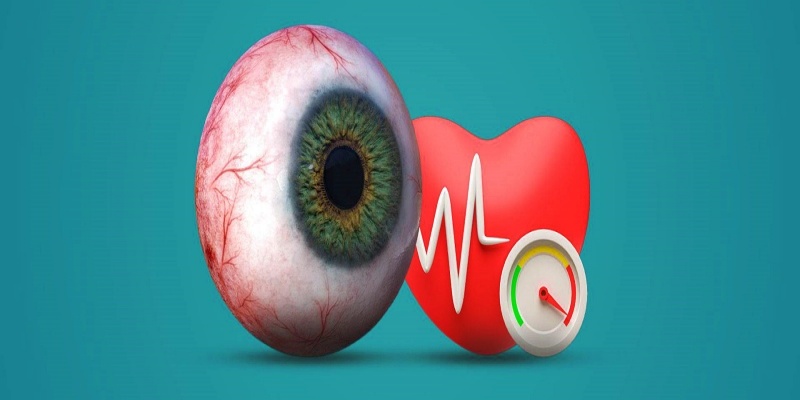

High blood pressure and retinopathy
The retina is the only place in the body that allows the observation and study of vascular systems, and here it works to establish an initial assessment and prediction of the state of the systemic vascular system due to the same anatomical structure and physiological functions.
More specifically, there are many studies that have discussed damage to the blood vessels in the retina as well as the relationship between this damage and the vascular system of other organs due to high blood pressure and its division into hypertensive retinopathy in different stages.
It is worth noting that hypertensive retinopathy occurs when the patient’s blood pressure rises significantly, causing thickening of the walls of the blood vessels in the retina, which leads to narrowing of these blood vessels. As a result, blood flow to the retina is restricted, and some cases may also cause retinal edema.
Over time, this high blood pressure can cause a lot of damage to the systemic vascular system, especially the small blood vessels that feed the retina, which leads to its expansion, cracking, and the appearance of blood clots that cause many health complications.
The most important complications resulting from high blood pressure and retinopathy
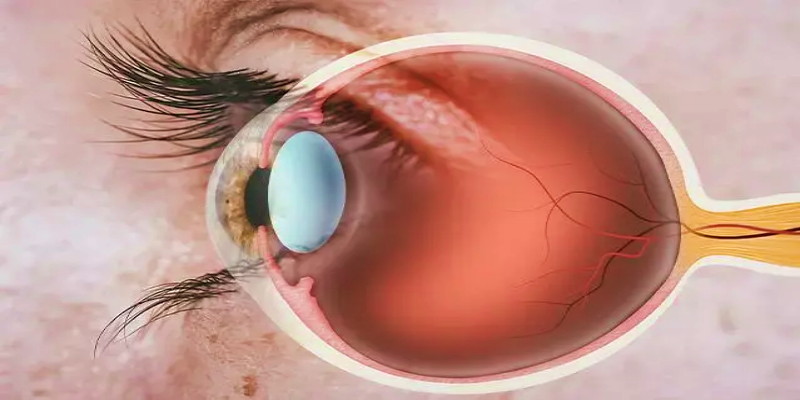

The most important complications resulting from high blood pressure and retinopathy
There are many serious complications that occur when high blood pressure and retinopathy occur, and they have a significant negative impact on vision. It is worth noting that these complications are as follows:
1) Central retinal artery occlusion: When this condition occurs, patients often suffer from the problem of sudden blurred vision, and complete blindness occurs in one eye despite not feeling any pain or redness in the eye.
It is worth noting that the golden time here for emergency care until vision is restored is within the first two hours, as a state of gradual decline in the level of improvement will occur within the next 6 hours.
2) Central retinal vein occlusion: This is one of the complications that leads to retinal edema, which causes vision to gradually decrease over a few days, appearing in the form of a layer of fog in front of the eyes or dark spots in the central area.
It should be noted that depending on the severity of the disease, there will be a decrease in vision. Therefore, once signs of blurred vision are detected, patients need to go to reputable medical facilities immediately for specialist examination.
3) Vitreous hemorrhage: This is considered a complication of blood spilling into the vitreous fluid, which occurs when blood vessels rupture, blocking the transmission path for light rays, and causing the patient to see a layer of smoke and a moving red veil.
This condition may disappear after a few days, but it may also develop in a more severe form, causing opacity in the vitreous body and thus making the treatment process much more difficult.
4) The fly phenomenon: This phenomenon is evident in the patient feeling that there are many black spots flying in front of the eyes. The reason for this is that when the retinal vein is blocked, new blood vessels may appear on the retina.
It must be known that these new blood vessels are in a very fragile state and when they rupture, they cause bleeding inside the eye, which creates suffering from the phenomenon of flying flies.
5) Optic nerve damage: This type of complication occurs when a certain amount of blood and fluids drained from the blood vessels damages the optic nerve, causing the patient to lose vision quickly and irreversibly.
Therefore, when high blood pressure is diagnosed, doctors usually examine and monitor patients’ eye lesions periodically.
Read also: What diseases can result from high blood pressure?
Mechanism of detecting retinopathy due to high blood pressure
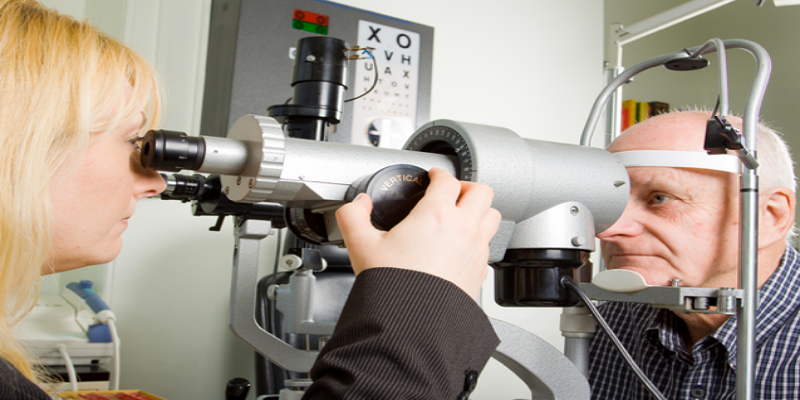

Mechanism of detecting retinopathy due to high blood pressure
Extreme caution must be exercised with such medical conditions because they are considered a severe and static risk due to the absence of any clear signs of illness until the patient’s vision suddenly decreases or he suffers from a retinal hemorrhage, which means that he has entered stages 3 and 4 of complications.
Therefore, when high blood pressure is diagnosed, you must visit doctors periodically and request some tests and analyzes to verify the occurrence of any eye damage, including:
- Color fundus photography/funduscopy to evaluate the disease: This is a simple and inexpensive method that is indicated for most medical conditions.
- Fluorescence angiography: This method is used to evaluate areas of anemia, vascular fistula, etc. where the patient is given a luminescent agent for evaluation, and usually the drug is injected into the blood vessels. However, it should be noted that this examination has high financial costs and difficult implementation conditions.
- Optical coherence tomography of the retina: This examination works to diagnose and evaluate macular damage and exudative retinal detachment. This advanced method is often indicated when there are more accidents in the eye area than just routine eye damage examinations.
Preventive ways to manage retinopathy
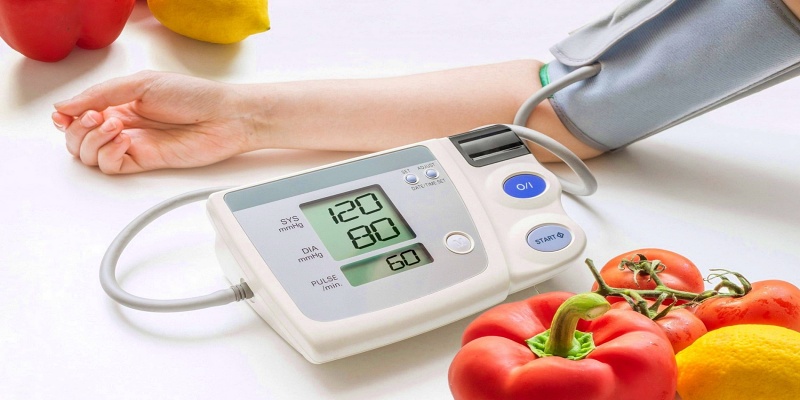

Preventive ways to manage retinopathy
The management of hypertensive retinopathy depends on the severity of the disease. Therefore, people with this chronic condition must work to control blood pressure according to the instructions of the treating physician, along with regular monitoring and follow-up examinations for early detection and prevention of possible complications.
In addition, it is always recommended to implement healthy lifestyle patterns and appropriate nutrition, as these things help stabilize blood pressure and reduce eye damage. You should completely avoid eating processed and frozen foods, and it is advised to eat a lot of fresh fruits and vegetables that contain an abundance of vitamins and fiber, such as Orange, lemon, tangerine, grapefruit, etc.


